In the realm of evergreen trees and shrubs, Podocarpus stands as a true gem. Its numerous varieties exhibit distinctive traits, but one thing remains constant—Podocarpus adds a lush shade of green to your landscape, enhancing the natural beauty of your surroundings. However, the allure of Podocarpus extends beyond its aesthetic appeal. In this comprehensive guide, we explore the diverse facets of Podocarpus, shedding light on its characteristics, care requirements, and propagation methods. If you’re intrigued by the idea of incorporating these remarkable plants into your landscape, or if you simply wish to delve deeper into the world of horticulture, this guide is your key to unlocking the secrets of Podocarpus.
Guide to Podocarpus :
Plant Attributes
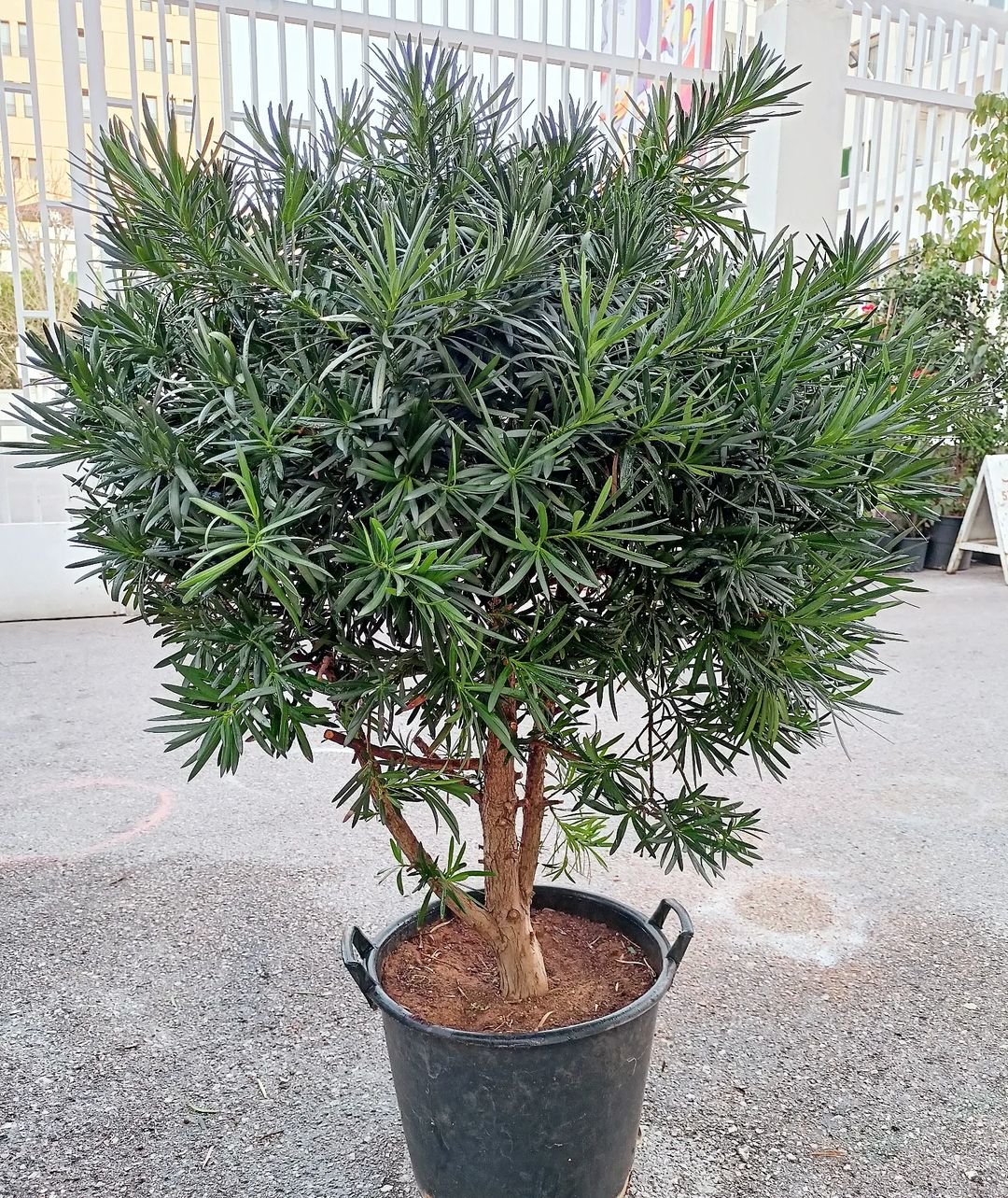
short information chartChatGPT
ChatGPT
| Attribute | Description |
|---|---|
| Botanical Name | Podocarpus |
| Common Name | Podocarpus |
| Plant Type | Evergreen shrub or tree |
| Zones | Varies depending on species |
| Sun Exposure | Full sun to partial shade |
| Soil Type | Well-drained, fertile soil |
| Watering | Regular watering, drought tolerant once established |
| Growth Habit | Upright, dense foliage |
| Height/Spread | Varies by species, typically 10-50 feet tall, 5-20 feet wide |
| Special Features | Slow-growing, can be pruned into various shapes, excellent hedge or screen plant, ornamental foliage |
Unveiling the Beauty and Utility of Podocarpus
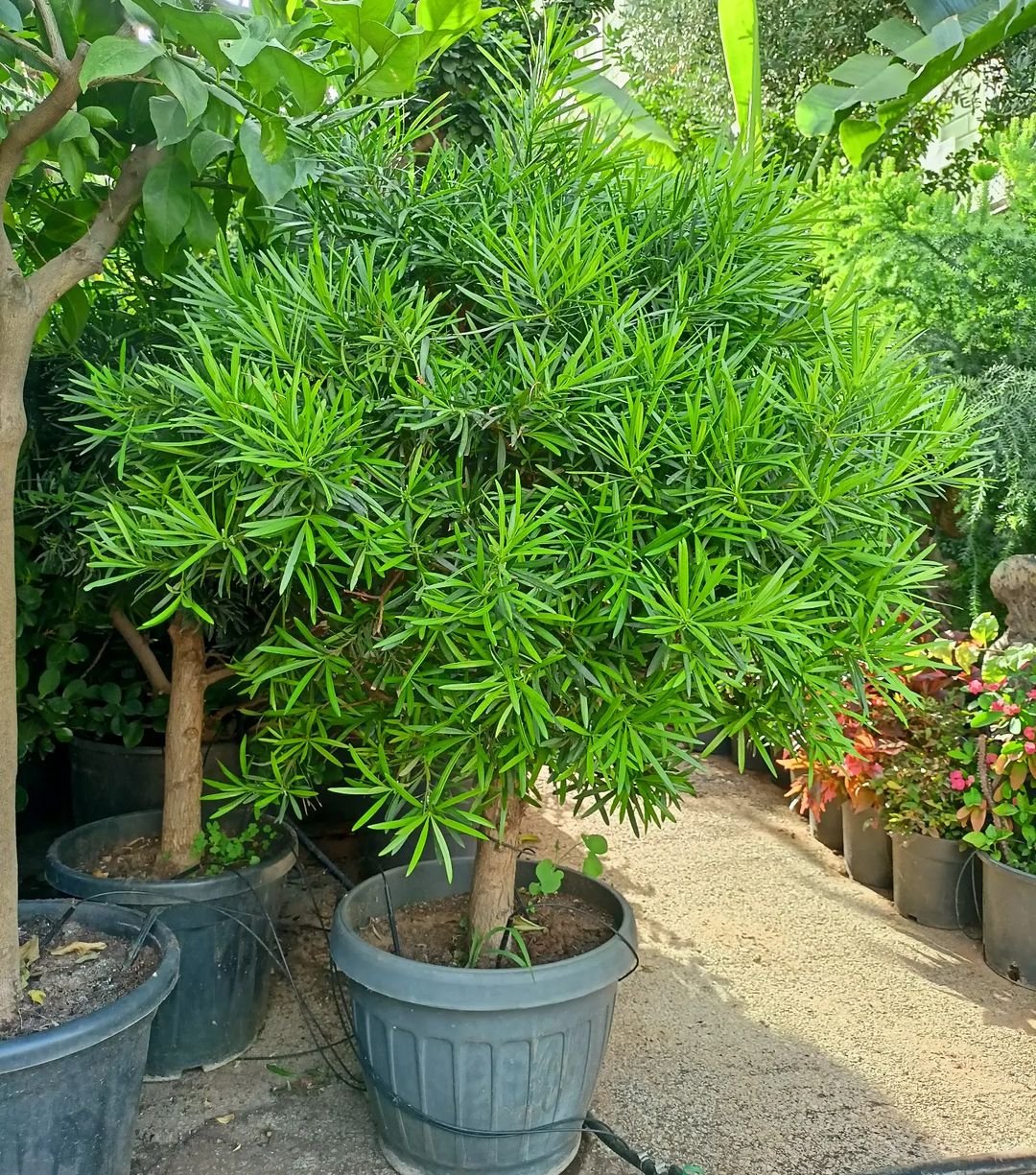
Structure and Privacy
One of the standout features of Podocarpus is its ability to provide structure and privacy to your outdoor space. These versatile plants can be utilized to block unsightly views, creating a natural barrier that not only adds beauty but also seclusion. While some might mistake Podocarpus for yews, their distinguishing characteristics lie in the longer, broader, and lighter-colored leaves.
Varieties and Growth Habits
Podocarpus offers a wide array of varieties, each with its unique growth habits. When grown from cuttings or grafts of a mature tree, these plants exhibit smaller, closely set leaves and limber branches. This growth pattern makes them excellent choices for espalier, hanging pots, or even as vines along fences, often sold as Podocarpus elongatus. With proper staking and tying, Podocarpus elongatus can eventually transform into upright trees, retaining their distinctive drooping foliage. An exception to this rule is Podocarpus ‘Icee Blue’, featuring striking blue-gray foliage and shrubby, upright growth that can reach up to 25 feet in height and width.
Reproduction and Fruit Production
Podocarpus plants are either male or female and do not bloom. However, when a female plant grows in proximity to a male counterpart, it may eventually bear fruit after several years. These fruits resemble small, berry-like structures, which often attract birds. Podocarpus adapts well to most soil types but may develop chlorosis (yellow leaves with green veins) in alkaline soils. These plants are known for their tolerance to drought and salt spray, making them ideal choices for gardens in the coastal South.
Podocarpus Care
Like many trees and shrubs, Podocarpus is relatively low-maintenance. They thrive in full sun to partial shade and require well-drained, moist soil. You can cultivate them as specimen trees, create hedge walls for privacy, or use them as effective windbreaks. For gardening enthusiasts in the South, training Podocarpus from willowy grafts into espalier or shaping small shrubs into potted bonsai can be a rewarding experience. Moreover, Podocarpus demonstrates excellent salt and drought tolerance, further enhancing its appeal to Southern gardeners.
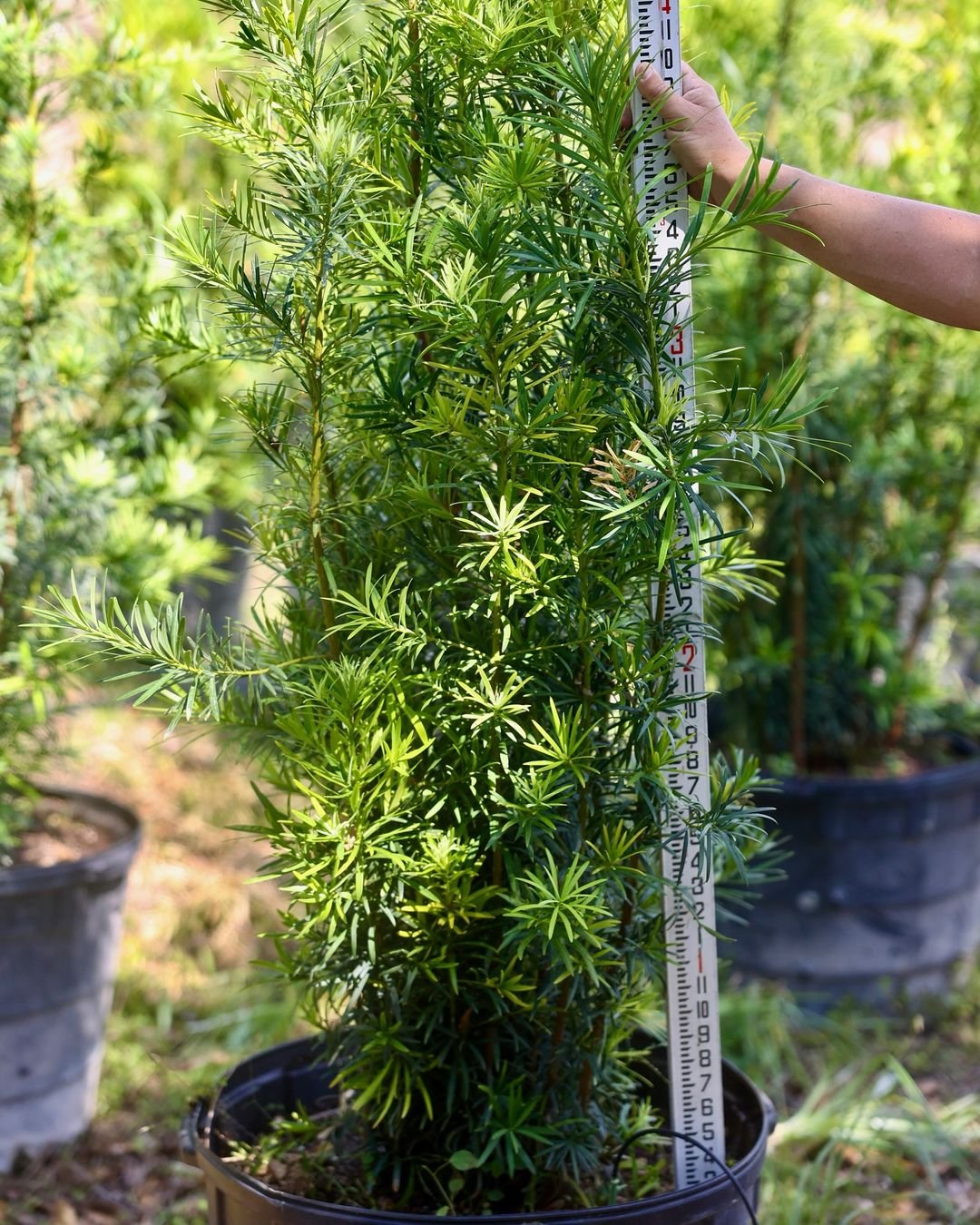
Nurturing Podocarpus: Essential Care Guidelines
Light
Podocarpus prefers a sunny location, although it can also thrive in partial shade. The more sunlight these trees and shrubs receive, the healthier they will be.
Soil
Podocarpus flourishes in sandy or loamy soil that is both moist and well-draining. They do not thrive in soggy or heavy soil conditions.
Water
Young Podocarpus trees or shrubs require regular watering during their initial year to establish themselves. After this period, Podocarpus becomes drought-resistant and requires minimal watering.
Temperature and Humidity
Podocarpus thrives in the South, especially in Zones 8-11, and is well-suited to the region’s humidity and temperature conditions.
Fertilizer
While not overly demanding, a dose of slow-release fertilizer in the spring can stimulate growth. Avoid fertilizing in the fall to ensure optimal plant health.
Exploring the Diverse Varieties of Podocarpus
Southern Yew (Podocarpus Macrophyllus)
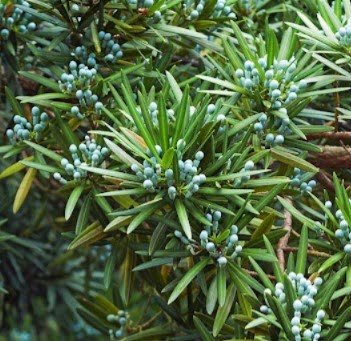
Here’s a short information chart specifically for Southern Yew (Podocarpus macrophyllus):
| Attribute | Information |
|---|---|
| Botanical Name | Podocarpus macrophyllus |
| Common Name | Southern Yew |
| Plant Type | Evergreen tree or shrub |
| Zones | 7-10 |
| Sun Exposure | Full sun to partial shade |
| Soil Type | Well-drained, fertile soil |
| Watering | Regular, moderate watering |
| Growth Habit | Upright, dense |
| Height/Spread | Up to 20-40 feet tall, 10-20 feet wide |
| Special Features | Drought tolerant, versatile landscaping option, attractive foliage |
- USDA Zones: 8–11 (LS, CS, TS)
- Features bright green leaves, approximately 4 inches long and 4 inches wide
- Grows in a narrow and upright fashion, reaching heights of 15-50 ft and widths of 6–15 ft
- Ideal for use as a screen shrub, a specimen tree, in espalier, or as a clipped hedge
- Native to eastern China and Japan
Shrubby Yew (Podocarpus m. Maki)

Here’s a short information chart specifically for Shrubby Yew (Podocarpus macrophyllus ‘Maki’):
| Attribute | Information |
|---|---|
| Botanical Name | Podocarpus macrophyllus ‘Maki’ |
| Common Name | Shrubby Yew |
| Plant Type | Evergreen shrub |
| Zones | 7-10 |
| Sun Exposure | Full sun to partial shade |
| Soil Type | Well-drained, fertile soil |
| Watering | Regular, moderate watering |
| Growth Habit | Compact, bushy |
| Height/Spread | Up to 4-6 feet tall and wide |
| Special Features | Dense foliage, suitable for hedges or borders |
- A slower-growing dwarf variety, achieving heights of 8–15 ft
- Maintains a dense and upright form measuring 2–4 ft in width
- Perfect for creating hedges and adding greenery to your landscape
Fern Pine (Podocarpus Gracilior)
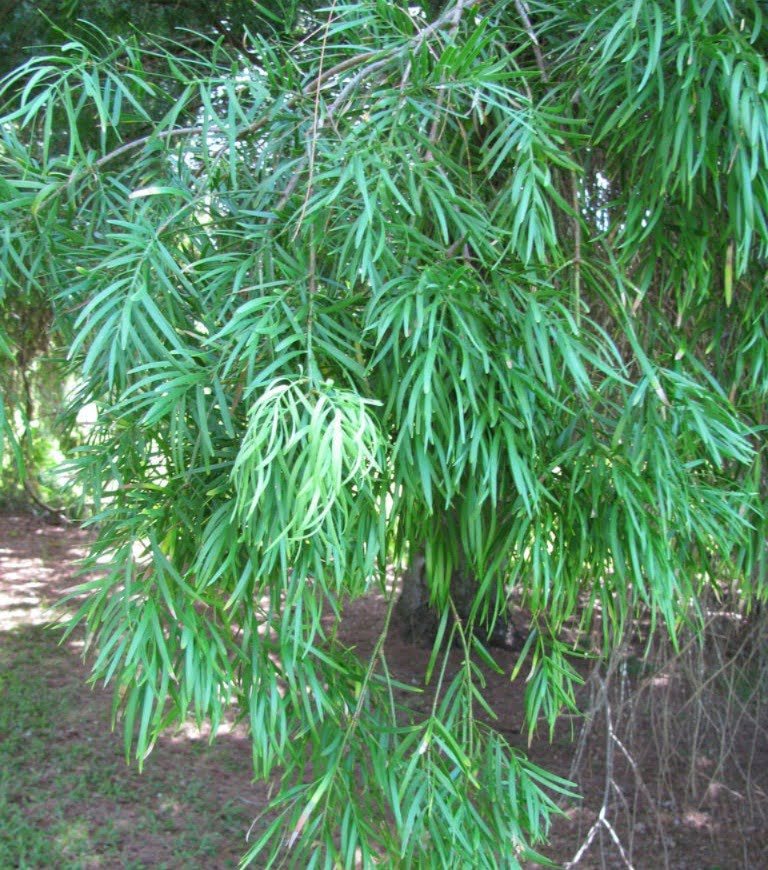
Here’s a short information chart specifically for Fern Pine (Podocarpus gracilior):
| Attribute | Information |
|---|---|
| Botanical Name | Podocarpus gracilior |
| Common Name | Fern Pine |
| Plant Type | Evergreen tree |
| Zones | 9-11 |
| Sun Exposure | Full sun to partial shade |
| Soil Type | Well-drained, fertile soil |
| Watering | Regular, moderate watering |
| Growth Habit | Tall, slender, conical |
| Height/Spread | Up to 40-60 feet tall, 15-20 feet wide |
| Special Features | Graceful foliage, ideal for privacy screening or specimen planting |
- Flourishes in USDA Zones 10–11 (TS)
- Originates from eastern Africa
- Grows to heights of 20–60 ft and widths of 10–20 ft
- A clean and pest-free tree suitable for street planting, lawns, patios, and gardens
- Ideal for use as a hedge or a large shrub
Propagating Podocarpus: A Step-by-Step Guide
To propagate Podocarpus, begin by selecting a small branch with new growth, typically a few inches in length. Remove any leaves near the cut end. Dip the end into a rooting hormone and plant it in a small pot with well-draining soil. Keep the soil consistently moist, and roots should begin to form, leading to the development of a new Podocarpus plant.
Potting and Repotting Podocarpus
For those residing in USDA Zone 8 or higher, small Podocarpus varieties can thrive in potted containers. This allows you to protect the plants from cold weather and manage their size. When choosing a pot, opt for one that is a few inches larger than the roots of your Podocarpus, allowing them to spread and facilitate growth. When the roots fill the pot, it’s time to select a larger container. Ensure that the pot has drainage holes to prevent waterlogging.
Overwintering: Protecting Your Podocarpus
In regions above Zone 8, it’s essential to overwinter your Podocarpus. Planting your Podocarpus tree in a container is a practical solution, allowing you to control its size and shield it from winter temperatures. This approach ensures that your Podocarpus thrives year-round, no matter the climate.
Addressing Common Problems
While Podocarpus is a hardy and low-maintenance plant, it’s not immune to challenges. If you notice the leaves turning brown, it might indicate the need for a deep soaking. Regular monitoring and proper care can help maintain your Podocarpus in optimal health and appearance.
Podocarpus is a versatile and visually appealing addition to any landscape. Its range of varieties, growth habits, and adaptability to different environments make it a valuable asset to gardeners in various regions. Whether you’re looking to enhance the privacy of your garden, create a striking hedge, or explore the world of bonsai, Podocarpus offers a wealth of opportunities. By following the care guidelines outlined in this guide, you can unlock the full potential of these remarkable plants and enjoy their enduring beauty for years to come.
Pingback: The Ultimate Guide to Podocarpus | Gardening Gu...